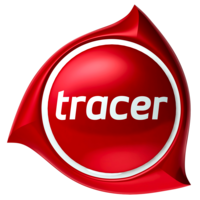Large Format Lenticular Printing Design Guide
Preferred format: Layered Photoshop file (.psd).
When we receive your upload, we check carefully to ensure they meet our specifications. Failure to meet specifications may result in additional charges and delay the job. To avoid schedule delays and cost overruns, please review and follow these guidelines and feel free to call if you have any questions.
Digital File Specs
The preferred file format is layered Photoshop files (.psd). Tracer can also accept most flattened image file-types for effects other than 3D.
Adobe Illustrator files should be saved in Encapsulated Postscript Vector (.eps) format, and all text should be converted to outlines. Include all linked files.
You can provide a link to your art, upload through our website link, or Tracer can email you a link to upload your files.
Images should be saved at a minimum of 200 dpi, at desired print size, plus extra image bleed.
Image bleed is image area beyond the final trim, which gives extra image space necessary for a clean final cut.
Standard bleed is 1/8”, but sizes larger than 36“ should have a minimum of 1/4” bleed on all sides.
ACCEPTED FILE FORMATS
Adobe Photoshop (.psd), .eps, .tiff, .jpeg, .png, .tga, .pdf
Adobe Illustrator .eps
ANIMATION DIRECTION
Side / Side
IMAGE RESOLUTION
Ideal 200 DPI or higher
NECESSARY BLEED
Standard: 1/8” on all sides
3D Specific: 1/8” on Top / Bottom and 1.5” on Left / Right
1/4” for images larger than 36”
Design
- Flip: Artwork can quickly flip between 2 or more images
- Zoom: Allows for in-and-out movement where the image will fade away or zoom in. 2 images supplied in 1 PSD, or multiple flattened files.
- Morph: Two or more images slowly change into each other.
- 3-D: Gives the illusion of distance between many layers of the image. Layered PSD only, with extra width, and multiple layers. Layered files are critical to avoid additional costs
Please indicate start and end of animation by beginning and ending time codes. Tracer can not guarantee the overall quality of prints produced from videos that are supplied in non-specified formats.
Backgrounds
To minimize ghosting ( a residual view of previous image appearing ) as much as possible, please note the following guidelines:
- Use patterned or textured backgrounds, if possible
- Avoid contrasting backgrounds. (i.e. red image over a yellow background)
Fonts
Use fonts that are bold and thick, and at a larger point size, 16 pt. minimum. Avoid small, or thin-line fonts, italics, or fonts that are based on diagonal lines. Avoid fine lined decorative fonts, such as scripts, unless used in large point sizes.
Choose San Serif (like Helvetica) over Serif (Times) font styles. Lenses tend to 'drop' the serifs and cause the type to look distorted.
Use increased spacing (kerning) between letters and words.
Avoid placing drop shadows on small text.
Text with a separate stroke and fill color work best at larger point sizes.
The stroke thickness should be no less than 1 pt. in most cases.
Looking for small format or just want to dive deeper? Click the links below to learn more.
Small Format Design Guide Detailed Design Guide